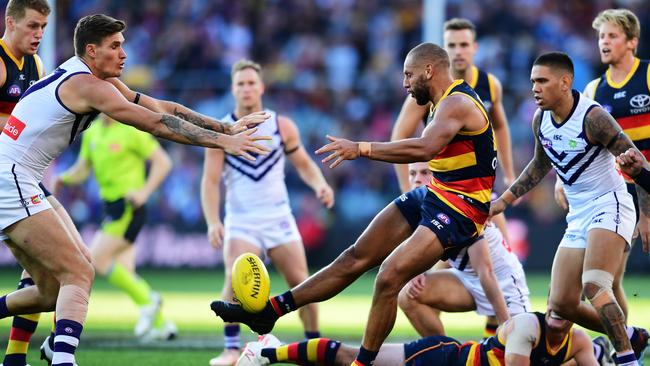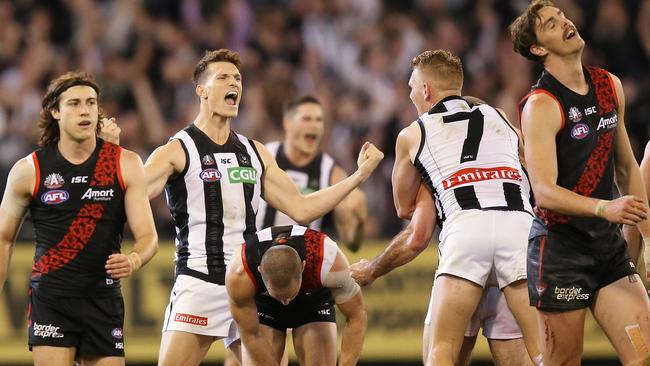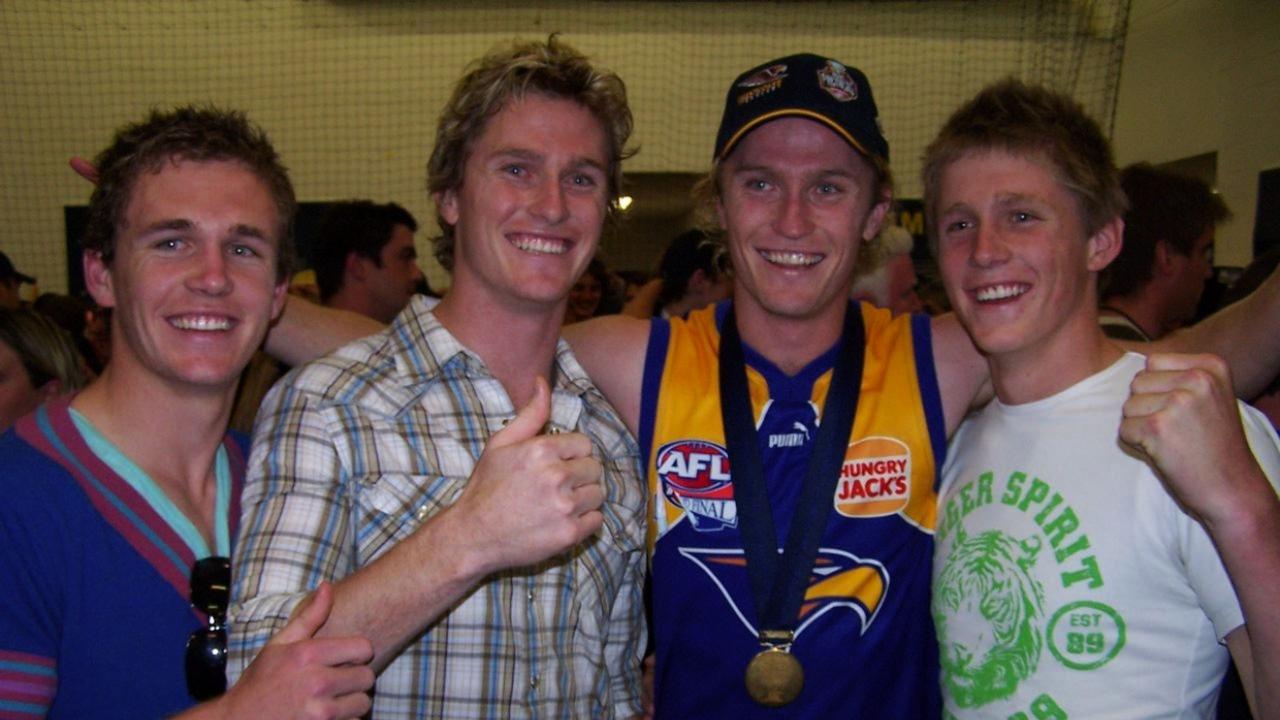Mick Malthouse breaks down the scoring debate and looks at what is producing ugly footy
Those who suggest this season’s low scores somehow equate to poorer football are missing the point, writes Mick Malthouse. Football is about winning, however you achieve it.
Expert Opinion
Don't miss out on the headlines from Expert Opinion. Followed categories will be added to My News.
So scoring is at a 52-year low. Does it matter?
It matters when the standard of the match is so poor that not a single goal is scored in a quarter, as was the case in the Adelaide-Fremantle game in Round 7.
It matters when each team had more than 400 possessions and went inside their forward 50, 50 times each and still only managed to kick 7.9 (51) to 5.4 (34) in perfect conditions.
MICK MALTHOUSE: WHAT RULE CHANGES MEAN FOR COACHES
MICK MALTHOUSE: WHY PATRICK CRIPPS IS ALREADY A STAR
That ugly result was a damning blight on our competition. And it matters.
But just because a game is low scoring, doesn’t mean it’s an ordinary game.
Let’s not forget that last year’s grand finalists kicked 11 goals each in a hard-fought, highly-skilled and thrilling match.
Compare that to the Richmond-Carlton Grand Final of 1972 when 50 goals were booted in what was more like a basketball match than footy, and not a particularly great spectacle for football purists.

Those who suggest this season’s low scores somehow equate to poorer football are missing the point. Football is about winning, however you achieve it.
It is the contest that keeps people glued to the action, not the frequency at which the scoreboard ticks over.
We’ve had some low-scoring, tight games that have captivated fans.
Equally so, some teams have kicked more than 100 points to thrash their opponents in a match which has only interested the winning club’s supporters.
If we dig a little deeper and analyse what’s happening on field to produce the low scores, that’s where we can find an ugly trend.
In the 1992 Grand Final between West Coast and Geelong, both teams had around 260 possessions for a scoreline of 16.17 (113) to 12.13 (85). So what are teams doing today to accumulate an extra 140-odd possessions each in a match for a lower score?
They are moving the ball back and forth outside the 50m arcs to control possession, hoping to disrupt the opposition backline enough to find a free target for a set shot at goal.
It’s very much like an offence run in basketball.
There is a direct relationship between the champion Hawthorn teams of 2013-15, which were outstanding at retaining possession, and what several teams are basing their game plans on today.

Generally, clubs will copy, to an extent, the game plan of the previous year’s premiers.
But in 2016 it was the Western Bulldogs, who gave nothing to follow except for sheer hard running and hard work, which was a scattergun approach compared to the Hawks.
Richmond semi-followed the Bulldogs in 2017 with a collective strong work ethic and run and carry of the ball. The Tigers reduced their possession rate substantially from the previous year.
Collingwood had some variance of it in 2018, but it took on West Coast, which had a similar philosophy to Hawthorn and prevailed.
Hence we are seeing multiple clubs trying to play the possession game and never before have we seen so many collective uncontested possessions in a season. The turnover rate from this is far too high.
The big problem is that very few teams can master this game plan the way Hawthorn did in its three-peat.
It’s OK to copy elements of the premiership team, but ultimately it’s best to maximise the strengths of your own outfit.
CLICK HERE TO SUBSCRIBE TO THE SUPERFOOTY PODCAST
The use of the tagger has (brilliantly) returned to our game to potentially shutdown the opposition’s best players. Plus the fear of losing the ball inside the front 50 has stopped teams kicking to a contest, and so around and around the ground we go again.
And strong defensive teams like Collingwood and Geelong are preying on this.
Collingwood’s clash with the Brisbane Lions in Round 5 was a classic ambush.
The Lions predictably and regularly moved the ball sideways and backwards among their 340 possessions to try to disrupt the Magpies’ defence.
But Collingwood’s modus operandi was to force Brisbane into error in the Lions’ back half. This produced multiple shots on goal from turnovers. And yet Brisbane persisted with this game structure all night and was smashed because of it.

In the 2001 Grand Final, the Brisbane Lions 15.18 (108) beat Essendon 12.10 (82). Each team tallied just more than 250 possessions. It is a regular occurrence this year for teams to amass 350 to 400-plus possessions.
Shallow entrances and the inability to find a free inside 50 target against good defence means the ball comes out to kickstart the merry-go-round and probe for another entrance. And off they go again …
This is what supporters are finding ugly and frustrating.
Great football is a tussle. One-on-one contests. Terrific defending. High scores and low scores.
Collingwood and Geelong, with great depth, don’t muck around with the ball.
They are kicking high scores, have healthy percentages, and in the best form of defence, they win the ball and keep it. They are first and second on the ladder.
GOOD GAMES
R3: Magpies 76 v Eagles 98
West Coast’s skill and game style held up in hostile environment.
R4: Cats 75 v Giants 79
Tactical game, strong tags by GWS in a couple of positions had Geelong guessing.
R6: Magpies 73 v Bombers 69
Not high-scoring, but tough game all day. Essendon’s fightback was impressive.
NOT SO GOOD GAMES
R5: Lions 64 v Magpies 123
Brisbane’s play was thoughtless against a disciplined team.
R6: Demons 42 v Tigers 85
Game marred by Melbourne’s overuse and turnovers.
R7: Crows 51 v Dockers 34
Turnovers and mistakes for the entire match.



